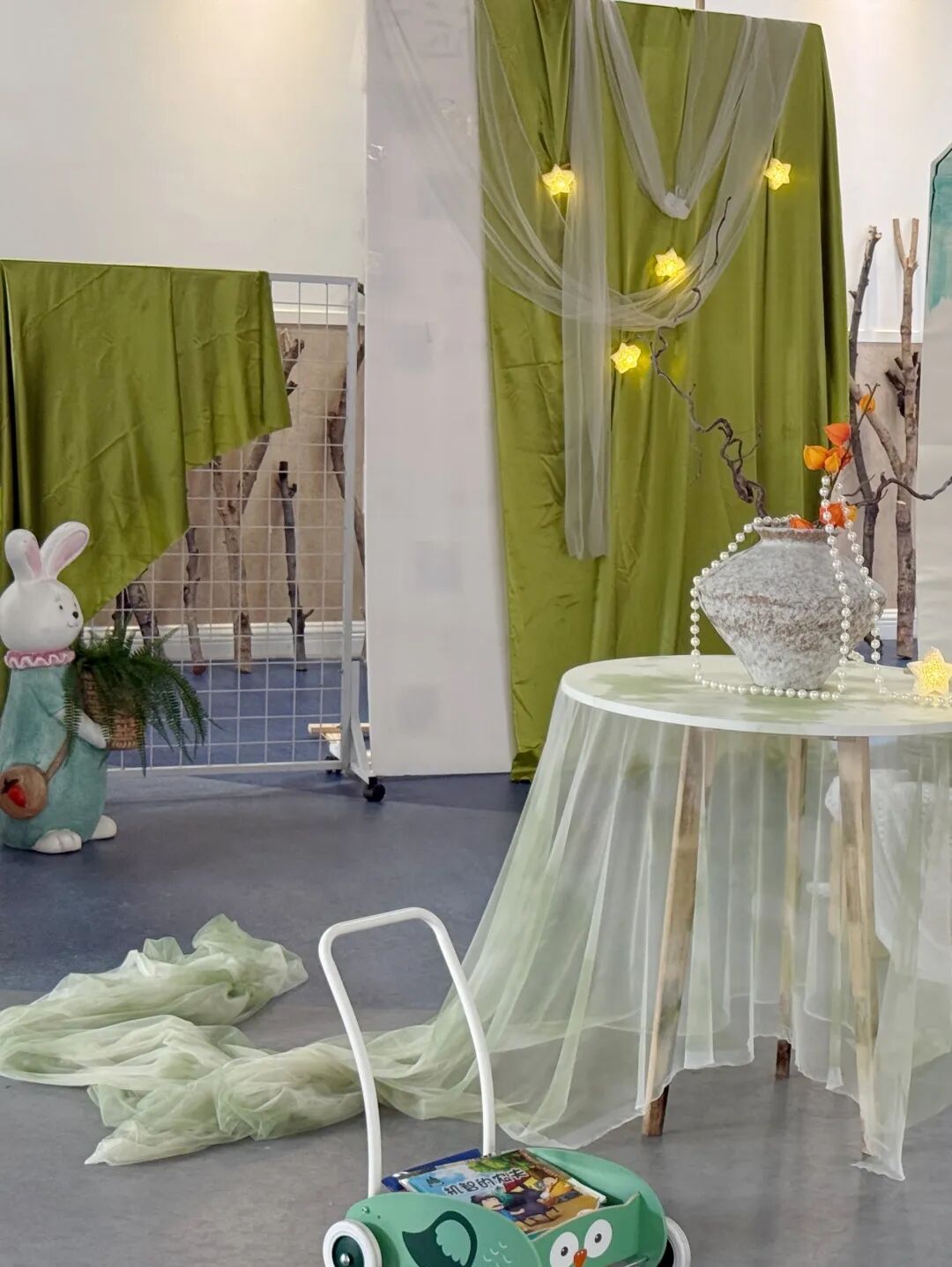王老师微信:18610206462
王老师18610206462王老师18610206462
设计思路
《开车去兜风》是“开车出发”系列中的一本书,它就像一本旅游书,无需出门,就能领略大自然的美。
Stude
A
Properties: Recorder, Overhead Projector and a map of world.
Teaching Objectives:
1. Practise listening ability.
2. Revise the grammar: the Comparative Degrees of Adjective and Adverbs
The Past Perfect Tense
Language Focus: Checkpoint 18
Teaching Procedures:
I. Showing the teaching aims
II. Revision
Check homework, then ask the students to read the partners’ homework to share with each other.
Revise the use of the Infinitive
III. leading in
T: Today we’ll learn something about Coco. Do you know where she is from?
IV. Listening practice
Play the tape or for the students to listen and find the answer, then look at the workbook, Exercise 1, go through the questions with the students and make sure they can understand what they mean. Play the tape again, let the students discuss their answers in pains before the teacher checks the answers with the whole class.
V. Presentation
Show the students a map of the world, and ask: What map is it? Help the students find “China” and “India” on the map. Let the students discuss the two countries: They are developing countries. They have a large population in the world.
Ask: What’s the population of China and what’s the population of India? Let the students read Part 2 and answer the questions. (China’s population is 1 328 000 000 and India’s population is 1 000 000 000). That’s to say India’s population is smaller than China’s .Ask the students to use the words in the box to complete the passage, then read together, finally ask the students to retell the text.
VI. Practice
Revise the Grammar: The Past Perfect Tense, give some examples:
1. He had left before his wife came back.
2. I remembered that Peter had already got a bike.
3. By the end of last month, he had learned 2000 new words.
4. When I got to the cinema, the film had begun.
Then ask the students to do Exercise 3. The answers are: 1 C 2 E 3 A 4 B 5 D. Let the students read these sentences together.
VII. Practice
Ask the students to do Exercise 4 first, then check the answers. The answers are: had, in, is, more, the, had, to, in, had, that, to, us, and, to
VIII. Workbook
Give the students five minutes to finish workbook. Do Exercises 1, 3 and 4. Then check the answers.
The answers to Exercise 1 are: took, went, found, was, called, told, had happened, said, would go, came, was found, checked, founded, said, stole, went, enjoyed, came, found, had stolen, had
The answers to Exercise 3 are: I worn out 2 try on 3 slow down 4 made up my mind 5 am pleased with 6 were angry with, deserve to 7 at least 8 as if 9 carried on
IX. Summary
Exercises in class
Fill in the blanks according to the text in this unit.
Lucy and Lily are___1___. They are living together___2___. But sometimes they fight. It doesn’t last too___3___. They___4___very well with each other again.
They look___5__, so it’s hard for people to recognize them: Who is Lucy___6__Lily. We always___7___mistakes. They feel___8__. They like most of the same things, for example: music, food and___9__. But Lily likes to___10__, Lucy likes to___11__, they don’t like the same colour,____12___. So they have some___13____Sometimes they disagree, but they never___14__. They love each other and they are___15___happy that they are twins.
Answers: 1.twins 2.most of the time 3.long 4.get on 5.the same 6.or 7.make 8. the same 9. books 10 .dance 11. sing 12. either 13. differences 14. fight 15.both
X. Homework
Prepare for the final examination.
Lesson 70 教学设计方案
Properties: Computer, Projector, PPT document provided.
Teaching Objectives:
1. Let the students understand the dialogue and learn new words.
2. Go over the Past Perfect Tense.
Language Focus:
New words: British, fail, summit, misty, mist
Useful expressions: disappear into, the first men to do tins, try to reach the top of
Teaching Procedures:
I. Showing the teaching aims
II. Revision
Ask the students to act out the dialogue is provided in Lesson 69-1.asf
III. Lead in
Give the students some information and pictures about Mount Qomolangma, and check their homework. Let them speak something about the history of climbing the Mount Qomolangma.
For example:
It was formed 60million years ago and ascends to the height of 8850. Surveyor General Andrew Waugh proposed to name the mountain Everest after his predecessor, George Everest. This name prevailed until today, although the mountain has two local names – Qomolangma in Tibetan, Sagarmatha in Nepali.
IV. Watch and listen
Ask the students to watch the flash Because it is there.swf which is provided. Listen the text carefully, and finish the questions:
True or False
1. Mount Qomolangma is the tallest mountain in the world. ( )
2. George Mallory is a professional (职业的) mountain climber. ( )
3. Mallory had tried four times to reach the top of the mountain. ( )
4. In 1921 he tried to climb the mountain for the first time. ( )
5. Edmund Hillary and Tenzing Norgay were thought to be the first men to reach the top of the mountain. ( )
6. Edmund Hillary found Mallory’s body in 1999. ( )
Answers:
1. √ 2. × 3. × 4. √ 5. √ 6. ×
V. Read the text
Let the students read the text carefully and grasp the main idea of this article. And find out what happened in different years (1921, 1922, 1924, 1953, 1999).
nne’s Best Friend Do you want a friend whom you could tell everything to, like your deepest feelings and thoughts? Or are you afraid that your friend would laugh at you, or would not understand what you are going through? Anne Frank wanted the first kind, so she made her diary her best friend. Anne lived in Amsterdam in the Netherlands during World War Ⅱ. Her family was Jewish so nearly twenty-five months before they were discovered. During that time the only true friend was her diary.
She said, ”I don’t want to set down a series of facts in a diary as most people do, but I want this diary itself to be my friend, and I shall call my friend Kitty.” Now read how she felt after being in the hiding place since July 1942. Thursday 15th June, 1944 Dear Kitty, I wonder if it’s because I haven’t been able to be outdoors for so long that I’ve grown so crazy about everything to do with nature. I can well remember that there was a time when a deep blue sky, the song of the birds, moonlight and flowers could never have kept me spellbound. That’s changed since I was here. …For example, one evening when it was so warm, I stayed awake on purpose until half past eleven in order to have a good look at the moon by my self. But as the moon gave far too much light, I didn’t dare open a window. Another time five months ago, I happened to be upstairs at dusk when the window was open. I didn’t go downstairs until the window bad to be shut. The dark, rainy evening, the wind, the thundering clouds held me entirely in their power; it was the first time in a year an
ts exercise, fit, strong, pollutionshare… with…, notice, pay attention to, signals, safety rules, helmets, light-colored, reflectors, in case of, first aid, call 120Stage 4:Post-readingFinish Ex.2 and a translation task.Stage 5:ProjectHow can we be safe on the road? Write a passage according to the information in 3, add your own ideas. The following words may help you.should (not)/must (not)/had better (not)play on the road; listen to music;look left/right; pay attention to;obey traffic rules; first aid;Stage 5:Summary and homework1. Summary:New words and phrases:truck, notice, safety,in a word, look out, pay attention toUseful expressions:Bicycle riding is good exercise.In a word, the best way to be safe is to be careful.Safety rules for bike riders:They must wear helmets to protect their heads.…, bicycle riders should know how to give first aid.2. Homework:a) Review the key point in Section C.(2) Complete the passage of Project.(3) Preview Section D. Collect information about bicycle races.V. Blackboard designSection CWords and expressionssafety, truck, notice, injury, signal, pay attention to, in case ofcan master the rules of changing original verbs into past tense, for example, learn-learnt, study-studied and so on.
Ability aims:
Students’ ability of listening will be improved and they can make a new conversation by using simple past tense.
Emotional aims:
Students will be interested in learning English grammar and they will have the courage to challenge the new things.
Teaching key points and difficult points:
Key points:
Students can master the rules of changing original verbs into past tense, for example, learn-learnt, study-studied and so on.
Ability aims:
Students’ ability of listening will be improved and they can make a new conversation by using simple past tense.
Emotional aims:
Students will be interested in learning English grammar and they will have the courage to challenge the new things.
Teaching key points and difficult points:
Key points:
Students can master the rules of changing original verbs into past tense.
Difficult points:
Students will use simple past tense to describe an unforgettable experience that happened in the past.
Teaching procedures:
Students can master the rules of changing original verbs into past tense, for example, learn-learnt, study-studied and so on.
Ability aims:
Students’ ability of listening will be improved and they can make a new conversation by using simple past tense.
Emotional aims:
Students will be interested in learning English grammar and they will have the courage to challenge the new things.
Teaching key points and difficult points:
Key points:
Students can master the rules of changing original verbs into past tense.
Difficult points:
Students will use simple past tense to describe an unforgettable experience that happened in the past.
Teaching procedures:
Step 1 Lead-in
Greet students and sing a song Yesterday once more.
Ask students the topic of this song then lead in the new class naturally.
(Justification: the song’s topic relates to the past and it is a very classic English song, so students will be drowned in the music even try to study this song.)
Step 2 Pre-listening
Give some examples to introduce the rules of changing original verbs into past tense.
Let students make some sentences to describe an experience of their own.
(Justification: students will be familiar with the grammar point and they can have a basic awareness of the English grammar.)
Step 3 While-lisening
1. Extensive listening
Listen to the tape for the first time and answer the quest
Unit 1 How do you study for a test?
Teaching aims:
Knowledge aim:
Students can accumulate some useful words through reading, such as frustrating, conversation and so on.
Students will learn more ways to learn English better.
Ability aim:
Students can use some basic reading strategies including skimming, scanning and prediction to read efficiently.
Emotional aim:
Students will be interested in learning English and can find the best way to learn English well.
Key points and difficult points:
Key points: Students can master some useful expressions and comprehend the content of this passage.
Difficult points: Students can master some useful reading strategies and put them into practice.
Teaching Aids: PPT. pictures
Teaching Procedures:
Step 1 lead in
1. Greeting with my students
2. Free talk
Let students talk about why they learn English freely and invite some students to share their idea with us.
S1: because it is very useful for us to communicate with foreigners…
S2: because we should have a good score in English examination.
By this way, teacher will lead students to think another question as they believed that English is very important in our life. “How can we learn English well?” then teacherwill lead in today’s topic “how do you learn best?”
Step 2 Pre-reading
Discussion and prediction
Teacher will encourage students to discuss with their partners about the way they usually use to study English, at the same time, let them predict what the author will tell us in this passage.
Step 3 While- reading
1. Global reading
Ask students to skim the passage and try to summarize the general idea of it. Then let students scan the passage for some specific information and answer the following questions,
“How many persons are mentioned in this passage?”
“How many ways do the characters mention in this passage?”
2. Detailed reading
Students will be required to read the passage again to finish the chart below the passage.
Step 4 post-reading
1. Deal with the language points
After students have finished reading, Teacher will ask them try to find the new words and expressions in the passage. They should try to learn them by themselves. Then we will deal them together.
2. Pair work
Students will work in pairs to do a survey by using the expressions on the textbook. Then they should finish the chart below the passage.
Summary and homework
Ask students to do a survey on more students about their ways of learning English.
Blackboard design
ion:
What are they talking about?
(Justification: students’ ability of getting main idea through extensive listening will be improved.)
2. Intensive listening
Listen to the tape one more time and answer the questions:
1. What does Lingling’s grandma do?
2. What does Lingling’s grandpa do?
3. Is Lingling’s grandpa learning English now?
(Justification: these questions can help students grasp some detailed information of Lingling’s family, and also, their listening ability will be improved.)
Step 4 Post-listening
Four students in a group, share an unforgettable experience with their partners. PaWoman :Good morning,sir!Can I help you?Dad: Yes,please. What w 1 you like,Ann?Ann : A l 2 bowl of noodles w 3 carrot and beef. I’m hungry.Dad: Anything to d 4 ?Ann: Yes. A glass of orange j 5 .Dad: OK. What a 6 you,Tom?Tom: I’m not h 7 .Just a b 8 of water.Dad: All right. And I’d l 9 a cup of tea.Woman :H 10 you are.Dad: Thank you.y attention to use the simple past tense. After 5minutes, some students will be invited to share in front of the class.
(Justification: this activity can help students improve their speaking ability, and can provide them a chance to apply the knowledge into real situation.)
Step 5 Summary and homework
Summary: Invite one student to summarize what we have learned today, and the teacher will give some help to complete.
Homework: Ask students to share the experience with their parents in English after class.
Blackboard design:
Step 1 Lead-in
Greet students and sing a song Yesterday once more.
Ask students the topic of this song then lead in the new class naturally.
(Justification: the song’s topic relates to the past and it is a very classic English song, so students will be drowned in the music even try to study this song.)
Step 2 Pre-listening
Give some examples to introduce the rules of changing original verbs into past tense.
Let students make some sentences to describe an experience of their own.
(Justification: students will be familiar with the grammar point and they can have a basic awareness of the English grammar.)
Step 3 While-lisening
1. Extensive listening
Listen to the tape for the first time and answer the question:
What are they talking about?
(Justification: students’ ability of getting main idea through extensive listening will be improved.)
2. Intensive listening
Listen to the tape one more time and answer the questions:
1. What does Lingling’s grandma do?
2. What does Lingling’s grandpa do?
3. Is Lingling’s grandpa learning English now?
(Justification: these questions can help students grasp some detailed information of Lingling’s family, and also, their listening ability will be improved.)
Step 4 Post-listening
Four students in a group, share an unforgettable experience with their partners. Pay attention to use the simple past tense. After 5minutes, some students will be invited to share in front of the class.
(Justification: this activity can help students improve their speaking ability, and can provide them a chance to apply the knowledge into real situation.)
Step 5 Summary and homework
Summary: Invite one student to summarize what we have learned today, and the teacher will give some help to complete.
Homework: Ask students to share the experience with their parents in English after class.
Blackboard design:
Students can master the rules of changing original verbs into past tense.
DifficThe teacher asks the students to read 1a and match the topic sentence with each paragraph. Then write a title for the passage in the box above.2. Read and understand. The teacher plays a flash about the text. After watching it, the students should find the answers to the questions in 1c.(1)What do people use bicycles for?(2)Why is bicycle riding good exercise?(3)How do bicycle riders protect their heads?(4) What must bicycle riders do when riding at night?(5)If a bicycle rider is badly hurt in a traffic accident, what should he / she do?3.Do some listening. Listen to 1a and find out ult points:
Students will use simple past tense to describe an unforgettable experience that happened in the past.
Teaching procedures:
Step 1 Lead-in
Greet students and sing a song Yesterday once more.
Ask students the topic of this song then lead in the new class naturally.
(Justification: the song’s topic relates to the past and it is a very classic English song, so students will be drowned in the music even try to study this song.)
Step 2 Pre-listening
Give some examples to introduce the rules of changing original verbs into past tense.
Let students make some sentences to describe an experience of their own.
(Justification: students will be familiar with the grammar point and they can have a basic awareness of the English grammar.)
Step 3 While-lisening
1. Extensive listening
Listen to the tape for the first time and answer the question:
What are they talking about?
(Justification: students’ ability of getting main idea through extensive listening will be improved.)
2. Intensive listening
Listen to the tape one more time and answer the questions:
1. What does Lingling’s grandma do?
2. What does Lingling’s grandpa do?
3. Is Lingling’s grandpa learning English now?
(Justification: these questions can help students grasp some detailed information of Lingling’s family, and also, their listening ability will be improved.)
Step 4 Post-listening
Four students in a group, share an unforgettable experience with their partners. Pay attention to use the simple past tense. After 5minutes, some students will be invited to share in front of the class.
(Justification: this activity can help students improve their speaking ability, and can provide them a chance to apply the knowledge into real situation.)
Step 5 Summary and homework
Summary: Invite one student to summarize what we have learned today, and the teacher will give some help to complete.
Homework: Ask students to share the experience with their parents in English after class.
Blackboard design:
当我把书放到教室,孩子们就迫不及待地看了起来,非常喜欢。如果将这本书作为集体教学活动的素材,那么它的价值体现在哪里呢?仔细琢磨,我发现:开车兜风,风在耳边轻轻吹,美丽的风景映入眼帘,立刻会让人的心情也舒畅起来,无拘无束地投入到大自然的怀抱中,十分惬意。
于是,我选用了一段清新、节奏感强的音乐与画面匹配,使孩子们情不自禁地动起来,就好像开着车,迎着风,意气风发地奔驰在乡村、田野、花田、山冈……其间我还用了瀑布的声音、溪水声、动物的叫声等,让孩子们跟随画面感受大自然。活动中可以让孩子用眼睛观察,用耳朵倾听,用心判断……
为什么要去旅行?旅行可不是为了到达目的地后拍几张照片。旅行是收获惊喜的过程,如果没有用心体会就不会有惊喜。这本书给予了孩子一次脑力大挑战的机会,如何从众多信息中找到自己关注的内容?沿途还有哪些小秘密?一路上有哪些景点?怎样和当地居民友好交往?这些问题可以逐一在集体活动中帮助孩子了解。
孩子们会在活动后认真地去图书角翻阅此书,更重要的是,当孩子再去旅行时,他们可能会用心发现路上的点点滴滴,体会其中的各种乐趣。在活动中,还可以让孩子感受一家人一起出去兜风会很快乐,引导孩子感知:只要和家人在一起,就会幸福无比。
活动目标
1.观察图片,合理猜测兜风途中的各个景点。
2.体验开车去兜风的快乐。
活动准备
多媒体课件。
活动过程
一、角色导入:幸福一家子
1. (播放多媒体:美景,风的声音。)
教师:瞧,多好的天气,多美的景色,听,风轻轻吹着,让我们开着车去兜风吧,全家一起开车兜风会很幸福哦!
2. 关键提问:看看这家有几个人, 他们分别是谁?
(重点关注:幼儿能否从后视镜、妈妈的怀抱中找到家人?)
3. 小结:这个家庭一共有四个人和一个宠物,分别是爸爸、妈妈、女孩、男孩和小狗。
【设计意图:通过多媒体课件,能让幼儿快速进入该绘本营造的情境中。在活动开始部分就聚焦这个家庭, 既能让幼儿了解故事中的主要角色, 又能引导幼儿进入先观察后判断的思维模式中。】
二、绘本阅读:开车去兜风
(播放多媒体:音乐和美景。)
1. 过渡:坐上车,系上安全带,大喊一声“出发啦”!
(重点关注:幼儿能否随音乐投入到开车去兜风的情境中?)
2. 观察、推测一路上的风景。
(1)来到花田(让幼儿由局部猜测整体)。
a. 播放多媒体:从小红车到整个花田场景。
b. 关键提问:车里多了什么?看看、猜猜我们到了哪里?
【设计意图:在第一个景点中通过判断推测,发现车里的微妙变化。通过简单的比较,幼儿就能发现结果,在活动之初获得成就感。对“花田”图片的观察需要考验幼儿细微的观察能力。】
(2)来到小溪和瀑布(让幼儿从整体上找寻细节)。
a. 播放多媒体:小溪、瀑布声音, 小溪、瀑布全景,并圈出车和这家人。
b. 关键提问:听听声音,到了哪里?车在哪里?人在哪里?
【设计意图:“小溪”和“瀑布”是需要通过听声音来判断的景点。“小溪”的声音比较明显,“瀑布”的声音稍有难度,幼儿的猜测可能会有多种答案,要鼓励幼儿通过听声音来判断。这个环节对完整图片的观察难度有所增加,需要找寻相关细节,这对幼儿来说是新的挑战点。】
(3)来到湖泊和草坪(让幼儿由观察展开想象)。
a. 播放多媒体:由倒影、鸟抓鱼、游船猜湖泊,由绿色、野餐垫猜草坪。
b. 关键提问:给你几张图片提示, 猜猜开车兜风到哪里了?
【设计意图:进入第三关,不仅需要观察、判断,还需要由此展开合理的想象。教师在出示图片时可以有不同的策略。如果幼儿能根据前两个提示准确地猜到这里是“湖边”的话,就可以用倒推的思路让幼儿继续猜。猜“草坪”则需要幼儿在判断后运用已有的生活经验进行联想,因此,这个环节对幼儿提出了更高的要求。】
(4)来到树林和山顶(让幼儿由观察尝试模仿)。
a. 播放多媒体:树林和山顶。
b. 关键提问:树林里有什么动物?每人说一种,说过的动物可不能再说了哦。
用一种动物的声音友好地和其他动物打招呼吧。
(重点关注:幼儿能否细致观察, 并从图片细节中进行合理推测和想象?)
(5) 小结:终于到山顶了,全家人一起开车出来兜风,真开心!
【设计意图:图片中有12 种动物, 可以让幼儿每人说一种动物,这既考验幼儿的观察能力、倾听能力,还考验幼儿的即时调整能力。如自己想说的动物被同伴先说了,那他就要及时调整。】
3.回忆判断兜风路线。
(1)过渡:山顶好高,都是云朵,什么也看不清。让我们一起把云朵吹开。
(2)播放多媒体:呼呼的风声,云朵逐渐散开。
(3)关键提问:站在山顶看全景, 能找到我们开车兜风的路线吗?
(重点关注:幼儿能否在全景中回忆并找到兜风的路线?)
小结:开车兜风经过了花田、
小溪、瀑布、湖泊、草坪、树林,最后到达山顶。
【设计意图:这个环节考验幼儿完整回忆和细致观察的能力。幼儿可以通过观察图片、回忆两种方式找到本次开车兜风的路线。】
4.利用逆向思维,推测回家路线。
(1)过渡:该回家了,你们知道回家的路线吗?
(2)关键提问:回家的路线是怎么样的?
(播放多媒体:音乐和相应美景。)
(重点关注:幼儿能否随着音乐和美景快乐地推测回家的路线?)
(3)小结:回家的路线是“树林→草坪→湖泊→瀑布→小溪→花田→ 家”。
【设计意图:这个环节可以培养幼儿的逆向思维,试着让他们倒推回家的路线,合情合理也增加了难度。现场演绎时,可以先让幼儿运用自己的方式进行记忆,再让大家一起倒推回家路线,互相帮忙的过程对中班幼儿来说具有一定的意义。】
三、延伸拓展:兜遍全世界
1. 关键提问:开车去兜风,你还想去哪里?
2. 小结:我们可以把自己想去的地方画出来,也可以收集世界各地的照片,下次再一起开车去兜风。
【设计意图:通过简单的提问引发幼儿更多的兴趣。当幼儿收集到更多照片、图片时,一个新的游戏就会诞生,幼儿依然兴致盎然,既能丰富、拓展他们的经验,也能激起他们游遍祖国大好河山、领略世界风光的热情。】
【】更精彩,觉得本文不错,请在右下角【点赞】支持,点亮【在看】,转发【分享】哟, 教育路上我们并肩同行
文章转载自微信公众号:幼教课件











